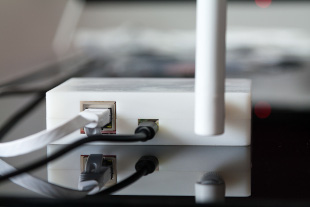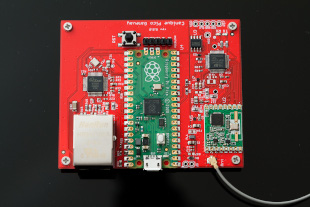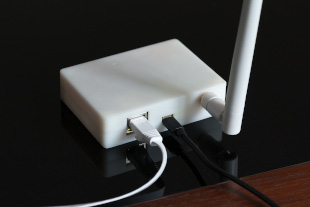Canique Pico Gateway - Internet Gateway for Canique Sensors
Canique Pico Gateway connects your wireless Canique sensors to the internet (Canique Cloud) or to an MQTT server of your choice. All communication to Canique sensors and to the Canique Cloud is encrypted with a top modern symmetric cipher. The device is shipped in a 3D printed enclosure.
Pratique: Canique Web Cockpit
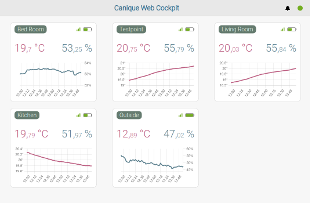
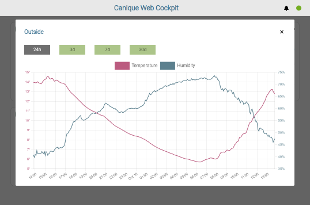
Access your data from any webbrowser, from any device, from anywhere through cockpit.canique.com: be it from a Smartphone, Tablet or PC.
By default Pico Gateway sends sensor data to the Canique Cloud so that you can access it via the Web Cockpit. But you can also send the sensor data to a custom MQTT server instead. This could be an MQTT server running on a Raspberry Pi in your local network or a cloud MQTT server in the internet.
Pratique²: HTTP API from the local network
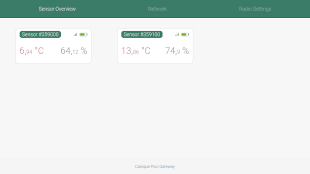
You can access the most recent sensor data via HTTP request as a webpage or in JSON format because Canique Pico Gateway has an embedded HTTP server onboard. Since the HTTP server is embedded, you don't need an Internet connection to access the HTTP API endpoint.
The sensors page refreshes the displayed sensor data every 10 seconds.
The sensors page refreshes the displayed sensor data every 10 seconds.
Économique: Pico Gateway is power efficient
Pico Gateway only consumes 0.7W. This is so little that you can connect it to the USB port of your router or even a computer USB port. You do not need to use a separate AC adapter.
Configurable: Settings Web Interface

You can set network and MQTT settings via a settings HTTP page that is accessible using the local IP of your Pico Gateway in a web browser.
Comparison of Canique Gateway products
Pico GW rev 0.8.2
Power
0.7W
1.3W
0.1W + Raspberry
Reception Quality (Noise Floor)
excellent
good
good
Autonomous Mode
(no Internet)
(no Internet)
constrained
NTP/MQTT Server needed
NTP/MQTT Server needed
constrained
NTP Server needed
NTP Server needed
yes
TLS
v1.2
v1.3
v1.3
MQTT
v3.1.1
v5
v5
Cloud Access
included
included
included
Local Cockpit
without charts, 10s refresh interval
with charts, realtime updates
with charts, realtime updates
MQTT Server configurable
yes
yes
yes
E-Mail Alarms
The E-Mail Alarm Triggering Engine on the Canique Cloud is pretty sophisticated. You can write an arbitrary Javascript expression as a triggering rule.
Here are some examples that are possible to set up:
Here are some examples that are possible to set up:
- E-Mail Alarm if temperature/humidity is above/below a certain absolute threshold
- E-Mail Alarm if temperature of one specific sensor is above/below temperature of another specific sensor (same applies for humidity) - this can be used to detect whether it's colder outside than inside e.g.
- E-Mail Alarm for a combination of the above expressions (logical expressions like and, or, etc. are possible)
Availability
Resources
Datasheet
- Power consumption: 0.7W via Micro USB connector
- Power Supply: 5V/500mA via Micro USB connector
- Min./Max. transmission power: -2dBm / +13dBm
- Frequency Band: 868 MHz
- Transmission speed: 25kbps
- Main MCU: RP2040 - Dual ARM Cortex-M0+, max. 133 MHz
- Radio Controller MCU: ARM Cortex-M0+
- Ethernet: 10BASE-T
- Antenna Type: female SMA connector
- Supported TLS versions: TLSv1.2
- Supported TLS Ciphers:
TLS-ECDHE-ECDSA-WITH-AES-256-GCM-SHA384
TLS-ECDHE-ECDSA-WITH-AES-128-GCM-SHA256
TLS-ECDHE-RSA-WITH-AES-128-GCM-SHA256 - Root certificates:
Let's Encrypt ISRG Root X1 (Root Certificate, RSA 4096 bits, valid until 2035)
Let's Encrypt ISRG Root X2 (ECDSA P-384, valid until 2040) - Supported MQTT version: 3.1.1
- Max. number of connected sensors: 20 (50 and more is possible upon request)
- Operating temperature:
Electronics except RJ45 connector: -20°C to 85°C
RJ45 connector: 0°C to 70°C
White 3D printed case: max. 56°C - Default NTP Server: time.google.com
- UART speed (internally/externally): 500 kbps
- Max. number of concurrent HTTP connections: 2
- Turn-on time: ~10s
- Dimensions: 98 x 72 x 25 mm
Frequently Asked Questions
Does Pico Gateway work without internet connection?
That depends. If you configure it to connect itself to an MQTT server in your local network, then Pico Gateway only needs internet for time synchronization from time to time.
By default, when sending data to the Canique Cloud, internet is obligatory. If you cut the internet connection, you can still access current sensor data via HTTP but you won't see historic data and the Canique Web Cockpit will not be updated.
Note that time synchronization will not work without internet connection so the local time of the Canique Pico Gateway can drift if unsychronized for an extended period of time. Upon startup one of the first things Canique Pico Gateway does is to synchronize its time. So at least then an internet connection is needed.
Note that time synchronization will not work without internet connection so the local time of the Canique Pico Gateway can drift if unsychronized for an extended period of time. Upon startup one of the first things Canique Pico Gateway does is to synchronize its time. So at least then an internet connection is needed.
How do I find the local IP of Canique Pico Gateway in my local network?
If you are using the default Canique MQTT Cloud Server: Login to cockpit.canique.com and tap on the green connection circle on the top right. It will show you the local IP address of your Canique Gateway.
You can also login to your router administration page and look the IP address up there.
You can also login to your router administration page and look the IP address up there.
Where should I place Canique Pico Gateway?
Please keep the Gateway away from TV, loudspeakers, other electromagnetic interferences and metal objects.
There should be a distance of 1 meter or more to these objects. If the Gateway is too close, then messages from the sensors might get lost and would need to be retransmitted (this happens automatically). This would have a negative impact on the battery lifetime of the sensors.
If you need to receive sensor data from another building, an elevated position can be useful.
There should be a distance of 1 meter or more to these objects. If the Gateway is too close, then messages from the sensors might get lost and would need to be retransmitted (this happens automatically). This would have a negative impact on the battery lifetime of the sensors.
If you need to receive sensor data from another building, an elevated position can be useful.
Does Canique Pico Gateway make any noise?
No.
No fans, no noise.
No fans, no noise.
Does cockpit.canique.com support live updates?
Yes. As soon as a sensor reading is transmitted by the sensors, you will see the reading on cockpit.canique.com. The delay is usually only a couple of milliseconds.
How accurate is the sensor history that is stored on the Canique Cloud?
The last 180 days are stored without averaging, with full precision.
The last 5 years are stored with 5 minute averages.
If you want to go back more than 5 years in time, data is kept with 15 minute averages.
If you need higher precision storage, please contact us (priced plan).
The last 5 years are stored with 5 minute averages.
If you want to go back more than 5 years in time, data is kept with 15 minute averages.
If you need higher precision storage, please contact us (priced plan).
Do I need to configure my router and open any incoming ports for Canique Pico Gateway to work?
Definitely no. It would be a security risk to open ports for connections coming from the internet.
Pico Gateway usually needs no router configuration unless you block connections going to the internet.
Which ports does Canique Pico Gateway use?
It uses:
DNS - port 53 for domain name lookups
NTP - port 123 for time synchronization with public time servers
MQTTS - port 8883 for connecting to mqtt1.canique.com to synchronize sensor data (TLSv1.2 encrypted)
It opens these ports:
HTTP - port 80 so you can access the HTTP API and the settings page in the same network without using the internet
DNS - port 53 for domain name lookups
NTP - port 123 for time synchronization with public time servers
MQTTS - port 8883 for connecting to mqtt1.canique.com to synchronize sensor data (TLSv1.2 encrypted)
It opens these ports:
HTTP - port 80 so you can access the HTTP API and the settings page in the same network without using the internet
Contact form for inquiries
Any questions? Feel free to join our support forum or get in touch
